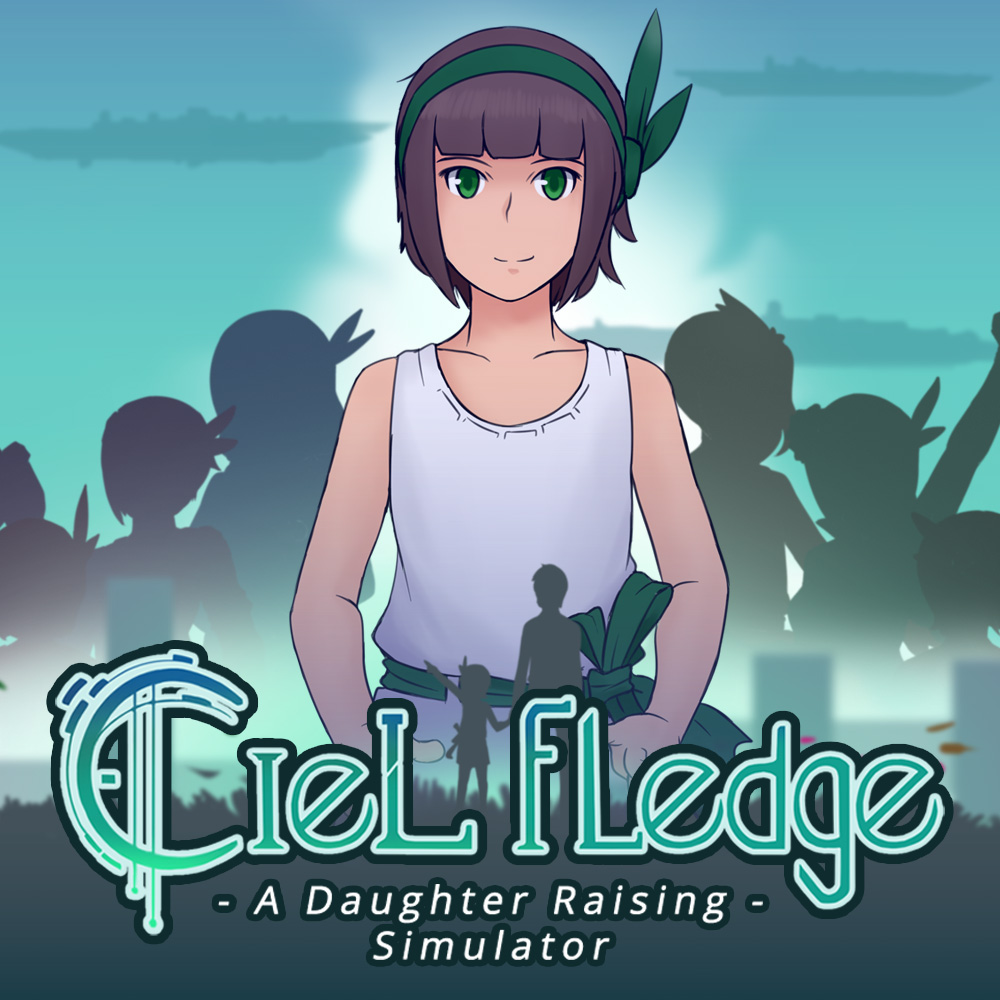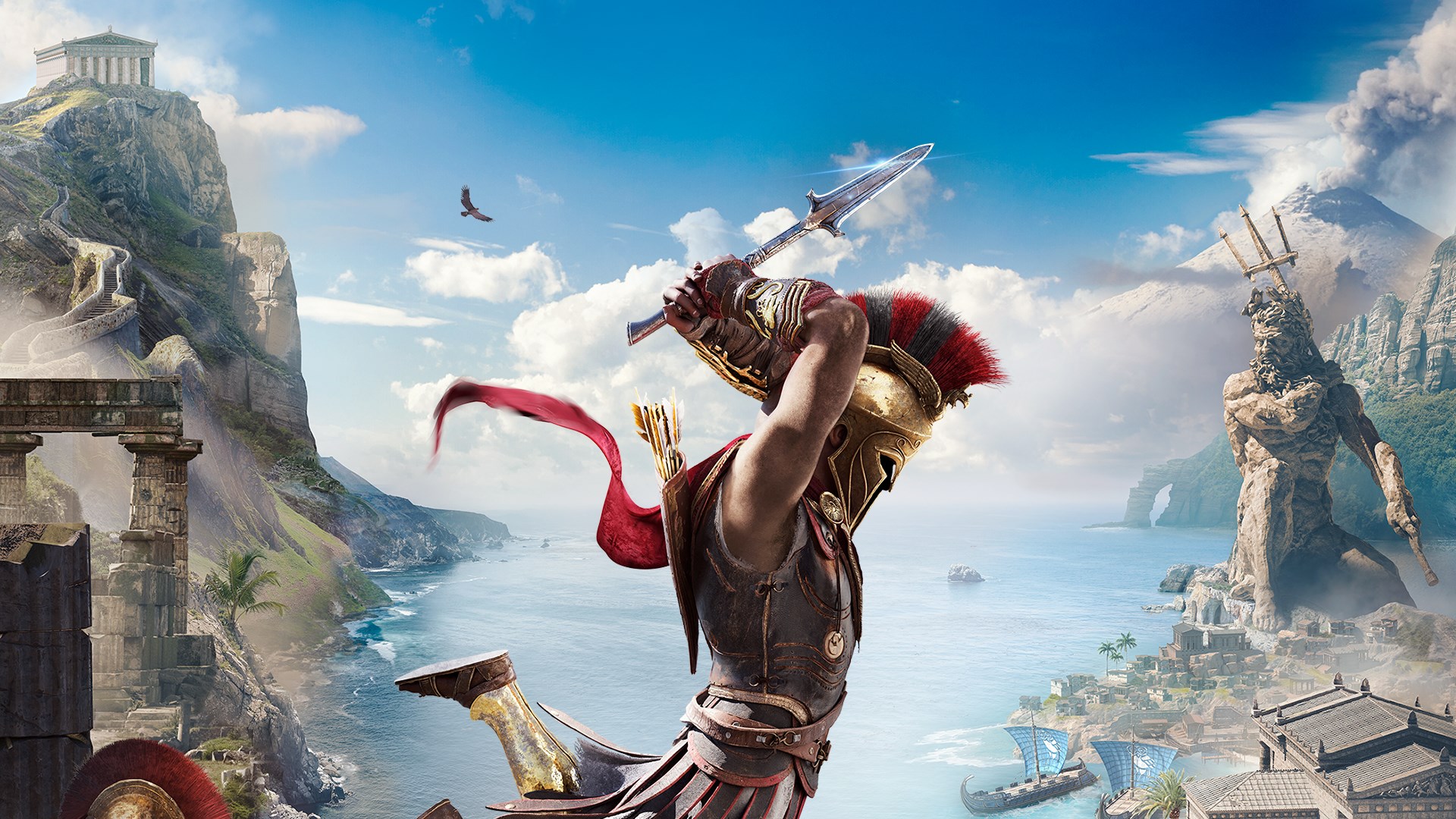Healer’s Quest Nintendo Switch Review
Fast Facts
Healer’s Quest
Developer: Rablo Games
Publisher: Plug in Digital
Website: http://healersquestgame.com/
Genre: Adventure, Fighting, Strategy, Role-Playing
Platform: Nintendo Switch (Also available on Xbox One, Playstation 4 and PC)
Age Rating: PEGI 12
Release Date: 11/02/2021
Price: £13.49
A code was provided for review purposes.
Introduction
Healer’s Quest is an RPG where a healer leads unskilled party members to rid the kingdom of evil. With a focus on comedy, this game depicts an engaging story that follows this group throughout their journey. Master the spells, navigate dungeons, and keep your party alive for as long as possible in Healer’s Quest.
So, You Have Jokes?
The plot featured in Healer’s Quest is one of the main draws to the game. While there is little overarching meaning behind the story, the dialogue on offer is humorous and engages the player. The writers frequently break the fourth wall, showing that the characters know that they are inside a game and the irony of their existence. Moreover, the dialogue also features pop culture references, discussing microtransactions, scam emails, and even automatic aiming hacks. Despite the focus on humor, the dialogue manages to depict a reasonable story. Unfortunately, the plot twists and character developments are minimal and predictable. The backstories to characters are enjoyable to watch, but do not force the player to think. The writing and story in Healer’s Quest provide a good experience for players interested in a humorous plot, but not for those who desire deep social commentary.
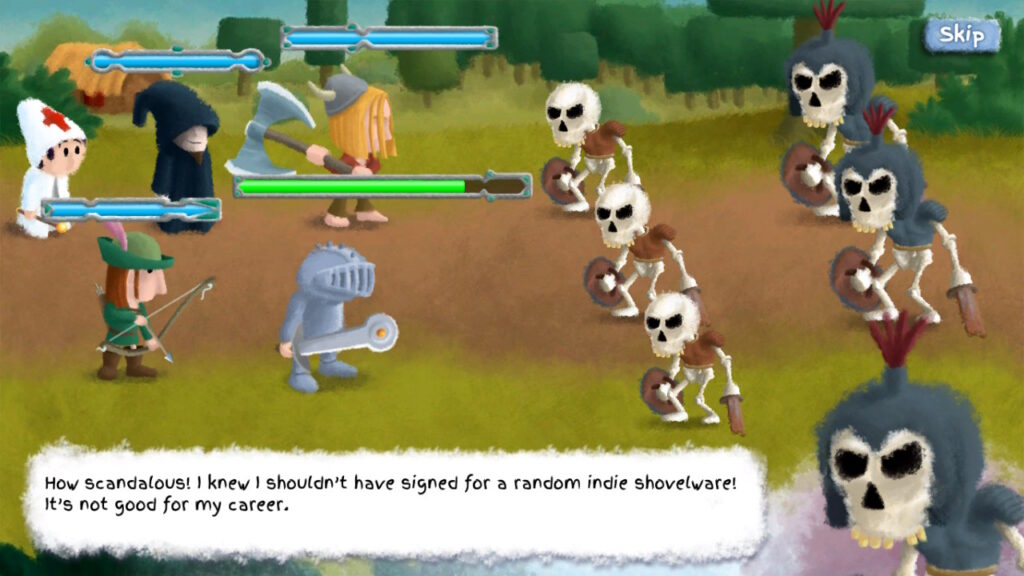
Heal Me!
In addition to the humorous story, the gameplay in Healer’s Quest contains many RPG elements. Various spells, weapons, and rings can be unlocked throughout the playthrough. The player will need to experiment before they decide which elements best suit their playstyle.
Contrary to many role-playing games, Healer’s Quest does not divide combat by turns. Playing as the healer, the player can act whenever they want. This may seem simple, but the player must also consider their limited mana, a gauge that measures magical ability. Casting spells and healing enemies drains mana. Although mana replenishes over time, there are also techniques to regain mana that ensure the player has enough to heal their party members. Through experimentation, the player will understand when to use their mana and when to focus on replenishing it.
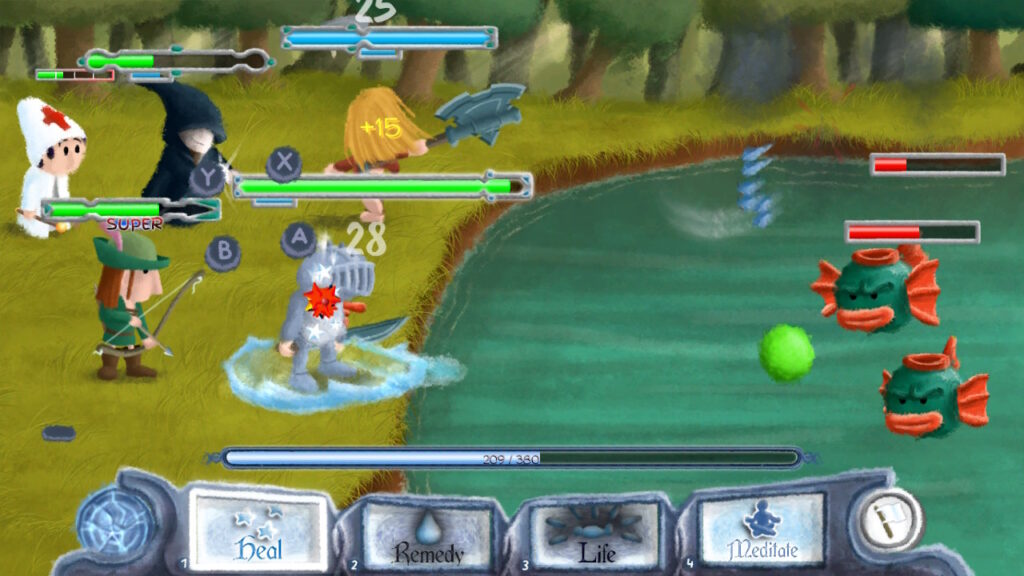
How do I Heal?
The variety of spells ensures gameplay can be tailored to the player’s tastes, including healing spells, damage buffs and even immunity. The player is only allowed four spells in each battle. While the variety of spells should encourage the player to test out alternative builds, there are certain spells that are staples. For example, one spell, remedy, cured the party members of status ailments. Without this spell selected, the party members may attack each other due to confusion, take residual poison damage, or even become paralyzed. The remedy spell was relevant in nearly every fight, enticing players to continue using this spell. While in theory the various spells seem to add options for the player to experiment with, players will find themselves using the same spells for most of the adventure.
Moreover, the game features an upgrade system for the spells. When the healer levels up, they receive stars that are used to upgrade spells. The upgrades improve the capabilities of the spells, offering tangible rewards when the healer levels up. Players will upgrade their most frequently used spells, as they are most familiar with their abilities. This discourages innovation because the upgraded spells are inherently better than new spells, even if only marginally. The game remedies this by allowing the player to reset their stars by paying a sum of gold. However, this landmark is implemented late into the adventure. By this point, the player has become accustomed to the abilities they selected in the beginning. They will most likely not get to experiment with the new abilities. The upgrade system was done well, offering incentives for players to continue playing. However, its inclusion restricts player experimentation.
Weapons and Rings? You’re Not a Pimp, Right?
After each fight, there is the possibility to receive weapons or rings. These change the base statistics of the party members. Some of the weapons work better in certain situations. For example, one axe does additional damage to trees. Unfortunately, not too many of the effects were situational. Most weapons simply alter the amount of damage or defense a character has. The few times when the player was encouraged to select their weapons based on the enemies promoted strategic gameplay. It would have been beneficial for more of the weapons to have similar attributes. Additionally, some of the weapons interact with the weapon choices of the other party members. For instance, the “BrotherForce” Axe does additional damage when the “BrotherForce” Sword is being used. This added an additional level of strategy. While infrequent, the in-depth applications of the weapons added much needed strategy.
The rings, on the other hand, were more unique. Many of the rings had interesting references. For example, there are rings based on the tortoise and the hare. While each party member only can have one ring, choosing which party member holds each ring offers a bit of strategy. Unfortunately, the rings did not change gameplay substantially. The interesting design of the rings will intrigue players when they find new ones. However, due to their minimal impact on the game, the ramifications of ignoring the rings altogether is negligible. Additionally, synergies between rings would have further incentivized strategic selections of the rings. Though not perfect, the rings were more innovative, and the theming gives them personality despite the minimal impact on the characters overall.
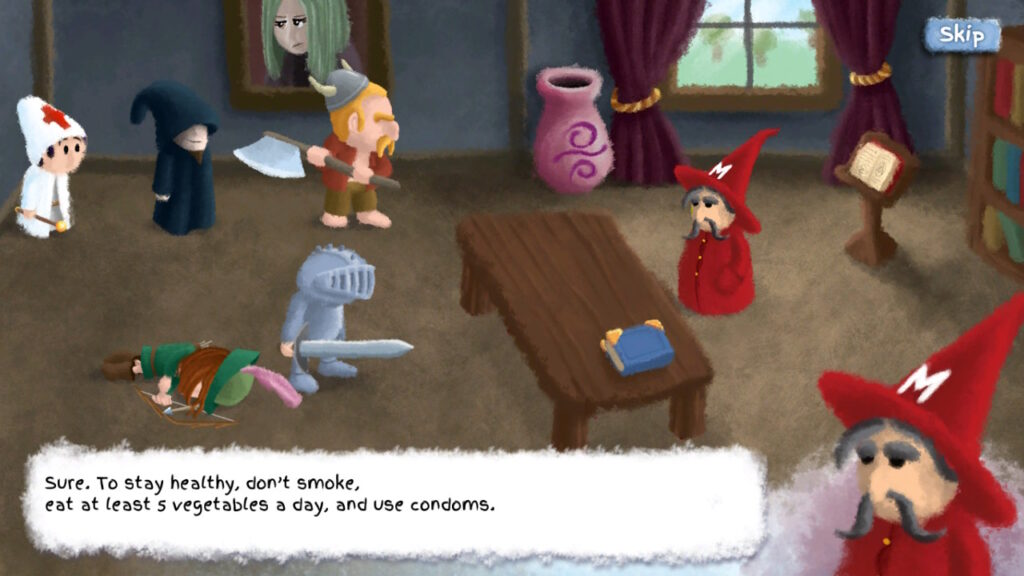
Today I am feeling…
One of the more niche elements featured in this game is the happiness meter. If a party member is dead at the end of a successful combat, that character begins to get frustrated at the healer. Once the gauge fills up entirely, the party member will pout in the beginning of a fight. To empty this meter, the player must pay an innkeeper to house the party members. This added an additional level of strategy to the game as instead of simply focusing on winning, the developers encouraged the player to keep as many party members alive as possible.
Though the selection of collectibles was not vital to gameplay, the gameplay loop was still enjoyable. Experimenting with the various spells and hoping party members remained alive kept me engaged throughout the game. Unfortunately, the quantity of unique enemies was underwhelming. As a result, many fights were repetitive, because the developers rarely introduced new enemies. Introducing additional diversity to enemy design and requiring more strategy when selecting weapons and rings would have increased the satisfaction of each fight. Despite this, the gameplay on offer in Healer’s Quest was enjoyable.
Signs of Life
The sound design of Healer’s Quest served its purpose well. It was nothing special, but it was not annoying. Overall, the sound design was good. Moreover, the visuals were well crafted. The art style chosen is reminiscent of watercolor images and was done well. Each character looked unique and though facial expressions were shown infrequently, the characters were expressive. The visuals fit the theme of the story and will further immerse the player in the world.
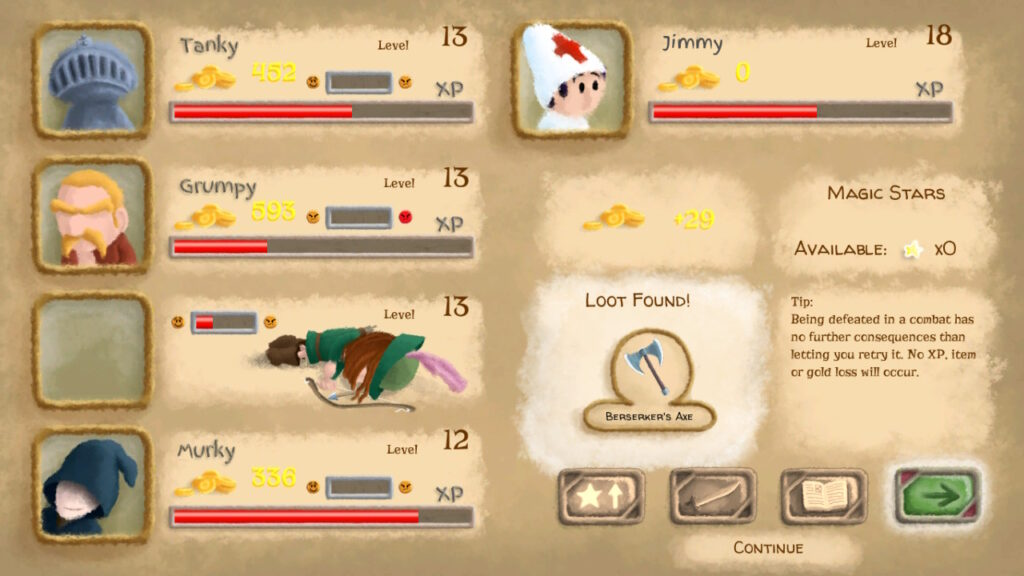
Conclusion
Healer’s Quest is an interesting take on the RPG genre. Playing as the healer forced the player to view the adventure from a different perspective. Though lacking in diversity at times, the gameplay loop is enjoyable, and the package is completed by a cute, humorous story. I enjoyed my experience with Healer’s Quest.
Rapid Reviews Rating

3.5 out of 5
3.5
You can purchase Healer’s Quest on the Nintendo eShop.

You can find and read our reviews on OpenCritic.



